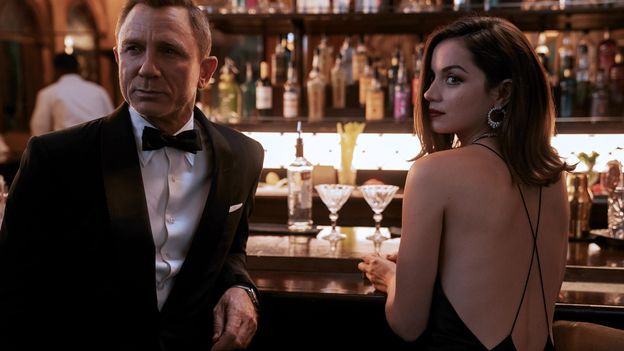What Bond’s next era will look like


One thing is for sure – don’t expect the trope of these villains having facial deformities to continue for much longer. “You’ve got Le Chiffre [from Casino Royale, played by Mads Mikkelsen] with his weeping tear duct. You’ve got Silva [from Skyfall, played by Javier Bardem] with his face dissolved. And now we’ve got Safin [in No Time To Die, played by Remi Malek] with a mask and facial disfigurement. Those things feel like a legacy of a past time,” says Ellard, noting that in Spectre, the last Bond movie, “they even managed to scar Blofeld [played by Christoph Waltz] along the way.” In the Ian Fleming books that started it all, it was Bond who had the facial scar. In the author’s Casino Royale novel, he describes Bond as possessing “a dark, clean-cut face, with a three-inch scar showing whitely down the skin of the right cheek.” After criticism from campaigners, alleging that depicting villains with deformities reinforces negative stereotypes and make the lives of real-life sufferers harder, it’d be a welcome reversal to introduce a scar to the right cheek of the titular hero in the next Bond outing just as Fleming originally envisioned.
The Bond cinematic universe?
Another question on the horizon for Bond fans is what Amazon’s new part-ownership of the franchise will mean for 007. The corporation has a streaming service to drive subscribers to, and the industry’s made a major turn towards “cinematic universes” in which stories are spread across a variety of films, TV shows, video games and more. Marvel initiated the trend with the Marvel Cinematic Universe. Star Wars then followed suit, with a wide slate of interconnecting titles set to start debuting later this year following the success of Disney+ show The Mandalorian. DC have tried it, and the Fast and Furious franchise is headed that way too. Will Jeff Bezos seek to maximise the earning potential of 007 by creating a wealth of new Bond-related content?
There is a precedent for it, says Verheul. “In the medium of comics, there’s a Latin American Bond who has been very successful. Bond novels are written in that format. I’d certainly be curious to see it. It’s exciting to imagine a Moneypenny spin-off where the hero in this traditionally male-skewing universe is now a heroine, and she’s black. I think there’s a market for that,” he adds.
Ellard points out a spin-off almost happened, years ago. “They were going to do it with Halle Berry’s character from Die Another Day. The script was written, but that never happened.” Ultimately, he suspects the scarcity of Bond movies is key to its aura of sophistication. “You can’t appear quite so high end if you’re making loads of things all the time. I love the MCU, but you can see the functioning conveyor belt. Bond has set itself apart as a rare jewel. You only get one every few years.” If there were four Bond-related things coming out every year, akin to the Marvel Cinematic Universe, it’s unlikely the Bond brand would get stronger.








